
Back to Loco of the Month homepage
Back to Sidestreet Bannerworks
.
February 2010
Archangel's Sammy
by Marc Horovitz

Sammy is another in Stewart Browne's long line of single-cylindered pot boilers. It is, in many ways, a scaled-down Sgt. Murphy. The locomotive is an 0-4-0 tank engine with a simple, bent-sheet-metal cab and solid-aluminum side tanks. It represents a generic industrial locomotive and is not patterned after anything in particular.
The locomotive follows the same simple design and construction as most of Archangel's low-end models. It has a pot boiler with a two-wick burner. Fuel is stored in a tank below the footplate. Fittings are minimal, consisting of a safety valve under the ornate brass dome; a throttle (regulator), the shaft of which protrudes through the rear wall of the cab; and a blowdown valve. A displacement lubricator with a screw-type drain sits in the right-hand cab door.
The engine is adorned with a pair of dummy outside cylinders. It is actually powered by a single, fixed, D-valve cylinder between the frames, driving the rear crank axle. Reversing is via a slip eccentric.
Most Archangel engines have a date stamp on their frame or the underside of the footplate. This engine seems to have escaped without one. At a guess, I'd date it probably sometime in the mid 1980s.
The engine is in excellent condition, barring one of the nylon buffers that was lost in a fire, when the overflow port on the fuel tank ignited one hot, bright day and was only noticed as the plastic buffer sagged to the ground.
The run
It is cold in Denver as I write this -- cold but not frigid, with the temperature hovering around the freezing mark. The sky is heavily overcast and there is a peaceful stillness in the air. A few flakes of snow are falling atop last night's dusting. In short, it's an ideal day to run a locomotive like this one.
It's funny how, sometimes, you just want to fall back on what you know will be simple and reliable. So it was today when choosing the engine to be highlighted this month. I've spoken before about the plain elegance of Archangel locomotives. Sammy fits well into this class.
I prepped the engine as usual, feeding and watering it as per the time-honored ritual. I lit the two wick burner and set the engine on the track in the cold to await steam. While the water came to a boil I made up a short train for Sammy to pull.
Steam came up in under 10 minutes. I pushed the engine down the track a little to clear the large cylinder of condensate, then set it off on its own. One time around the loop, then back the way it came, and I tied on the train. From that moment I was treated to a perfect run, with steam pouring out the stack into the cold, still air, an audible chuff coming from the cylinder, and the train clattering behind. With only a couple of stops for refueling, the run lasted around 40 minutes. The atmospherics were wonderful.
Runs like today's a rare and are to be treasured. The cold calmness of the day, the superb performance of the locomotive, and the sublime spectacle of the little train perambulating carelessly through the winter garden provided an experience unsurpassed. This is what it's all about.
Here's a movie of Sammy in action. If, for some reason you can't view it, click here.
|
|
|
| Builder | Archangel Models (UK) |
| Date built | Unknown -- likely mid 1980s |
| Gauge | 0 gauge |
| Scale | 16mm |
| Boiler | Pot |
| Fittings | Safety valve, throttle, blowdown |
| Fuel | Alcohol |
| Blow-off pressure | 60 psi |
| Cylinders | One, double-acting D-valve |
| Reversing gear | Slip eccentric |
| Lubricator | Displacement |
| Weight | 5 pounds, 0 ounces |
| Dimensions | Length over end beams, 9"; width, 3-3/8"; height, 6" |


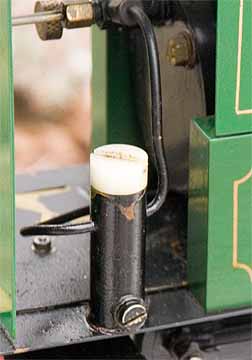



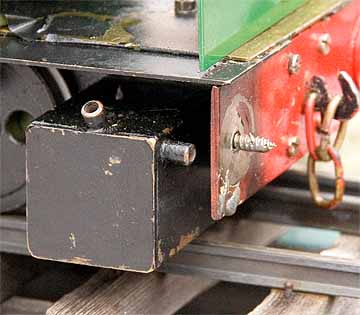

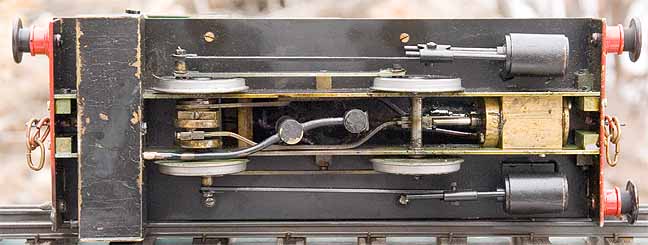
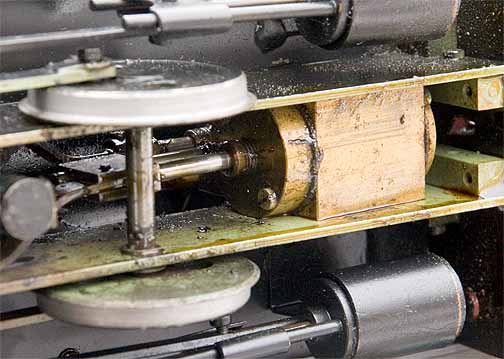


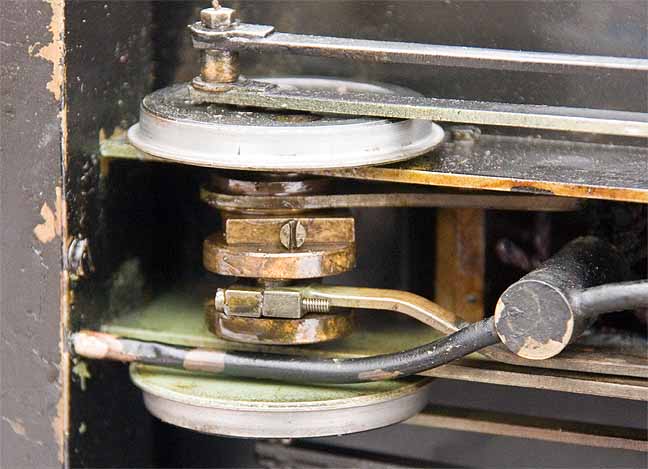
Back to Sidestreet Bannerworks home page
This page and its contents
Copyright Sidestreet Bannerworks, 2010
.